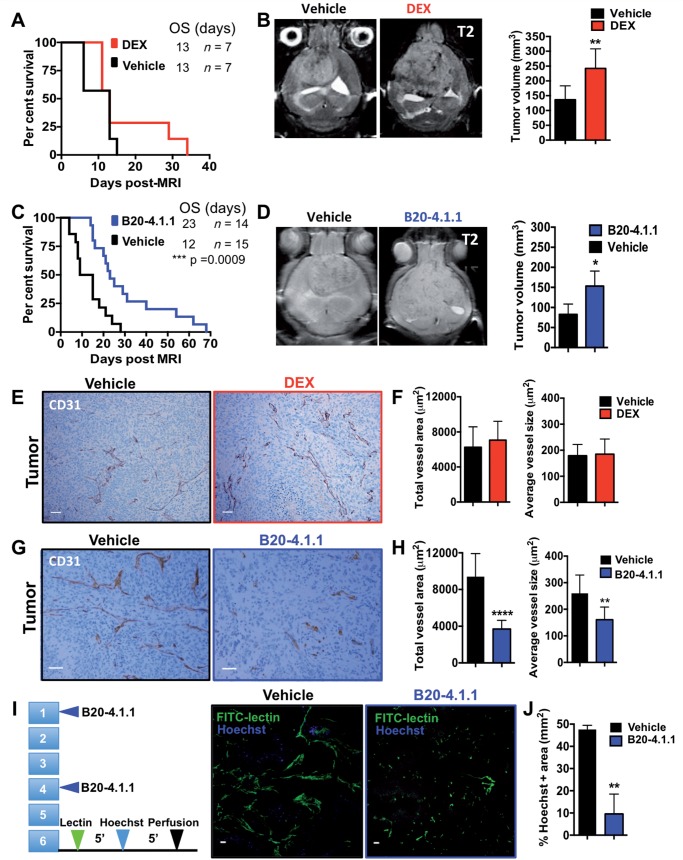Figure 7.
Effects of anti-VEGF versus DEX treatment on blood vessel density, leakiness, tumour size and survival. (A and C) Kaplan-Meier survival curves for (A) DEX treatment versus vehicle (n = 7 and 7 for vehicle and DEX, respectively) and (C) B20-4.1.1 versus vehicle (n = 14 and 15, respectively). Groups were matched based on initial asymptomatic T2-MRI tumour volume. (B and D) Representative images and quantification of T2-weighted MRI scans at time of symptom development for (B) vehicle- versus DEX treated mice (n = 6 and 6, respectively) and (D) vehicle- and B20-4.1.1-treated mice (n = 4 and 5, respectively). (E) Representative images and quantification (F) of CD31 staining of a tumour region after the administration of vehicle or DEX. (G) Representative images and quantification (H) of CD31 staining of a tumour region after the administration of vehicle or B20-4.1.1 (I) Illustration and representative images of a Hoechst dye leakage assay and functional vessel labelling with circulating FITC-conjugated lectin in vehicle- and a B20-4.1.1-treated tumours. (F) Corresponding quantification of Hoechst-positive area in B20-4.1.1-treated tumours compared to vehicle-treated tumours. P-values were calculated using an unpaired Student’s t-test, *P < 0.05 **P < 0.01, ****P < 0.0001: Scale bars = 50 μm for A and C and 100 μm for E. OS = overall survival.

